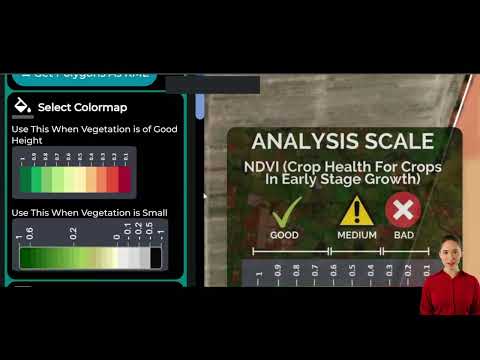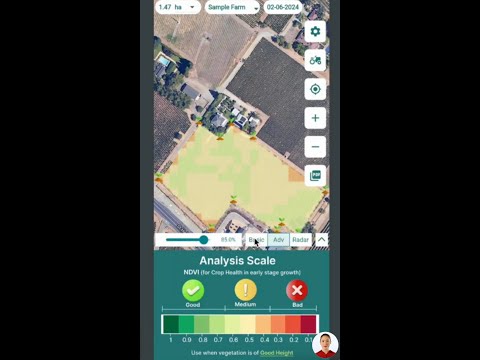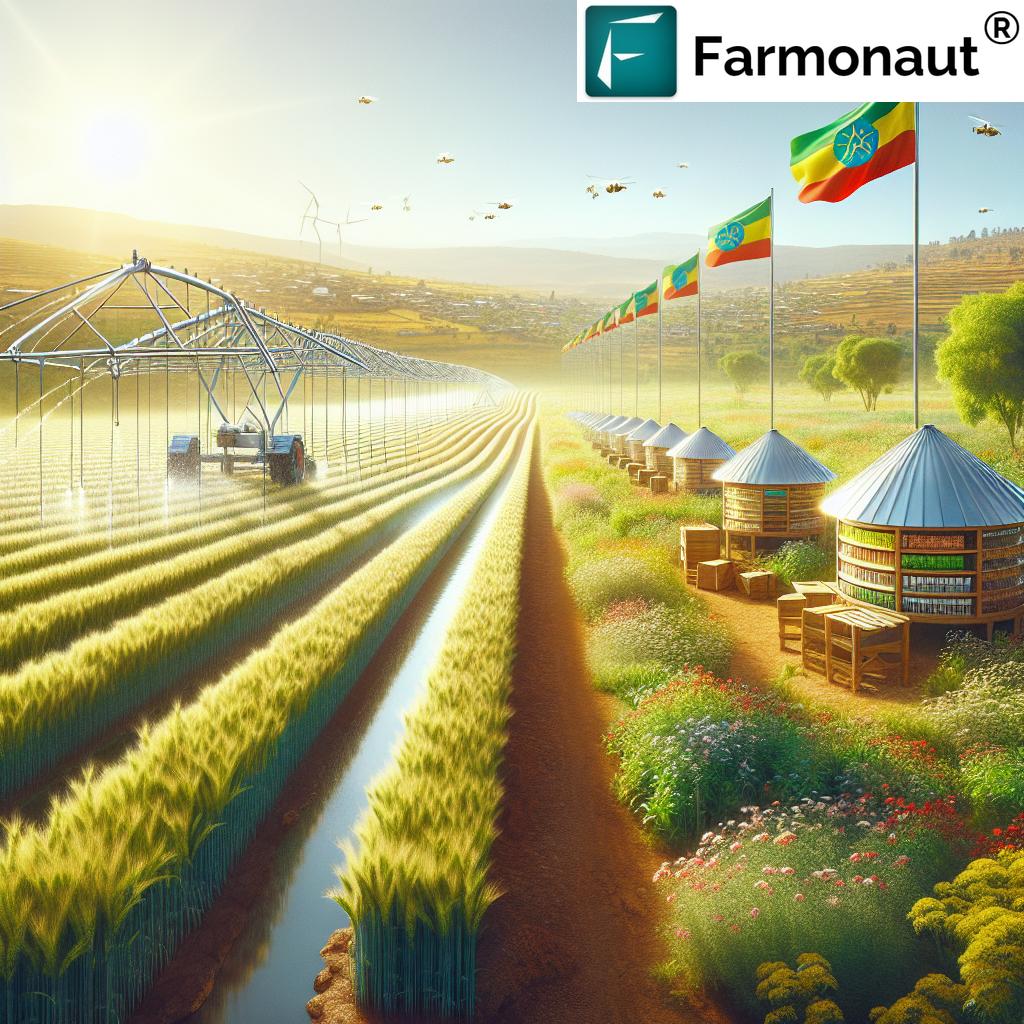Cassava: 7 Shocking Farming Secrets for Nigeria!
“Nigeria produces over 59 million tonnes of cassava annually, making it the world’s largest cassava producer.”
Access satellite-based, precision crop health monitoring and agro-advisory. API access available for developers:
Farmonaut Satellite & Weather API.
Read API developer docs: API Developer Documentation
Cassava: A Comprehensive Overview
Cassava (Manihot esculenta), also called manioc or yuca, stands as an unsung hero in global agriculture. As a staple crop native to South America and now thriving in tropical regions worldwide, including Nigeria, cassava’s starchy tuberous roots support the food security and economic development of millions. Its adaptability to poor soils, irregular rainfall, and diverse conditions makes cassava not only vital for subsistence farmers but also a cornerstone in sustainable food systems.
In this in-depth guide, we unlock the 7 most shocking cassava farming secrets optimized for Nigerian farmers, focusing on environmentally sound practices, disease management, climate-smart techniques, and the latest in agritech—including next-generation solutions from Farmonaut.
7 Shocking Cassava Farming Secrets for Nigeria!
- Variety Selection: Leveraging improved cassava varieties maximizes yield, boosts resistance, and strengthens food security. (See comparison table below)
- Soil and Site Preparation: Selecting light, well-drained loamy or sandy soils with correct pH ensures optimum cassava cultivation.
- Disease & Pest Management: Integrated control for blight, CMD, and nematodes preserves yields and maintains crop quality.
- Sustainable Cassava Farming Practices: Intercropping, rotation, and conservation tillage build soil fertility and ecosystem health.
- Climate Resilience: Understanding rainfall and temperature requirements helps avoid losses in shifting climates.
- Smart Technology Integration: Employing Farmonaut’s satellite and AI-powered decision tools improves productivity while reducing environmental impact.
- Safe Processing Methods: Proper detoxification of roots using traditional and innovative methods ensures nutritional value and safety.
“Cassava can yield up to 40 tonnes per hectare with sustainable farming, boosting food security and environmental health.”
Cassava Botanical Characteristics: Understanding the Plant
To unlock the full agricultural potential and implement effective cassava disease management, we first examine the botanical features of the plant:
- Woody Shrub Structure: Cassava is a perennial, woody shrub that typically reaches 2–4 meters in height.
- Stems & Leaves: The stems are long and slender, and the leaves are palmate with 5–9 lobes — critical for photosynthesis and root energy storage.
- Roots: The crop is celebrated for its edible, starchy, tuberous roots, which may be long, tapered, and covered by a rough, brown rind. Internal flesh is commonly white or yellowish, depending on variety.
- Composition: The roots are primarily composed of starch, with some calcium, phosphorus, and vitamin C. The leaves are protein-rich but lack methionine, an essential amino acid.
Cassava Varieties Comparison Table for Nigeria
Selecting the right cassava variety increases yield, disease resistance, and supports climate adaptability for sustainable, profitable farming. Below is a comparison of popular cassava varieties tailored to Nigerian conditions:
| Variety Name | Estimated Yield (tons/ha) | Disease Resistance | Maturity Period (months) | Drought Tolerance | Nutritional Value (Carbohydrate % / Fiber %) |
|---|---|---|---|---|---|
| TME 419 | 25–40 | High | 12–15 | High | 33–36 / 1.4–2.2 |
| TMS 30572 | 25–35 | High | 10–13 | High | 32–35 / 1.5–2.5 |
| TMS 98/0581 | 30–38 | Medium | 12–14 | High | 35–38 / 2.0–2.6 |
| NR 8082 | 28–34 | Medium | 10–12 | High | 33–36 / 1.6–2.3 |
| TMS 01/1371 | 27–37 | High | 11–12 | High | 34–37 / 1.7–2.5 |
| TMS 98/0505 | 29–37 | High | 10–12 | Medium | 33–36 / 1.4–2.2 |
Choose cassava varieties with high disease resistance, optimal yield, and maturity periods matching your region for maximum profitability and climate resilience.
Cassava Cultivation Practices & Climate Adaptability
Cassava cultivation thrives under very specific circumstances, yet is renowned for its adaptability in soil, temperature, and rainfall:
- Climates: Tropical and subtropical conditions are ideal, with mean annual temperatures from 20°C to 29°C and annual rainfall between 1,000–2,500 mm.
- Soil Selection: The crop prefers loose-structured sandy loams or loamy sands for easy root development and harvesting. It even tolerates infertile or acidic soils (pH 4.2–4.5).
- Field Preparation: Deep tillage helps loosen the soil, followed by ridging or mound making for better drainage, especially in areas with heavy rainfall.
- Propagation: Cassava is propagated via stem cuttings (20–25 cm long, selected from healthy plants). These are planted just prior to the wet season, vertically or at an angle to encourage vigorous sprouting.
- Rotation and Intercropping: Integrating legumes or rotating with maize/vegetables maintains soil fertility, reduces nematode pressure, and improves farm income.
Sustainable cassava farming techniques, such as minimum tillage, cover cropping, organic amendments, and crop residue retention, further promote soil health and lower environmental impact.
Cassava Disease Management: Safeguarding Yields
Cassava is susceptible to an array of pests and diseases that can devastate yields if not properly managed. Employing integrated cassava disease management is critical:
Major Diseases and Pests
- Bacterial Blight: Caused by Xanthomonas axonopodis pv. manihotis, it leads to leaf blight, wilting and dieback. Early signs include water-soaked lesions on leaves, which turn brown and necrotic.
- Cassava Mosaic Disease (CMD): Viral infections causing mosaic leaf patterns, distortion, and stunted growth (notably serious in Africa).
- Nematodes: Root-knot nematodes (Meloidogyne spp.) induce root swelling, hinder water/nutrient uptake, and lower root quality and yields.
- Other Pests: Cassava mealybugs and termites can also threaten plants, especially in drier zones.
Effective Disease Control Strategies:
- Use Resistant Varieties: Select modern, improved varieties with natural resistance to blight and CMD.
- Crop Rotation: Alternate cassava with cereals or legumes to break the pest and disease life cycle.
- Clean Planting Materials: Only plant certified, disease-free stem cuttings.
- Field Hygiene: Remove infected debris, practice clean weeding, and destroy diseased plants swiftly.
- Rogueing: Uproot and burn affected plants to contain mosaic spread.
Technology platforms like Farmonaut’s Jeevn AI System can deliver real-time advisory for customized pest monitoring, helping farmers spot early warning signs via satellite and act swiftly to save crops.
Read more about solutions for crop insurance claims and satellite verification, ensuring rapid response during outbreaks and improving food security.
Cassava Production Worldwide & Economic Importance
Cassava production worldwide has achieved record highs in recent years, with Nigeria leading as the world’s largest producer.
- Global Output: As of 2022, the global production reached over 330 million tonnes. Nigeria accounted for approximately 18% of this output with more than 59 million tonnes.
- Other Producers: Democratic Republic of the Congo, Thailand, and Indonesia are also significant contributors.
- Food Security: Cassava is the third largest carbohydrate source in the tropics, after rice and maize. Over 500 million people depend on it as a primary food source.
- Economic Importance: In Nigeria, cassava supports millions of smallholder farmers, serves as both food and animal feed, and is crucial for agro-processing industries. Flexible harvest times enable farmers to store cassava in fields as a famine-reserve, buffering households against market shocks.
- Industrial Uses: Processed cassava roots produce starch, flour, and ethanol for food, beverages, biofuel, and textile sectors, increasing value addition and job creation.
Discover how Farmonaut’s fleet management tools support agribusinesses in optimizing cassava logistics, resource allocation, and traceability through
Fleet Management for Agribusiness and
Blockchain-based Product Traceability.
Cassava Nutritional Value & Uses of the Roots
Understanding cassava nutritional value and cassava root uses is important for food security, health, and industry:
- Composition: Raw cassava roots are primarily composed of carbohydrates (starch), yielding approximately 160 kcal per 100 grams. Protein and fat content are low, but the leaves are protein-rich.
- Vitamins & Minerals: The crop provides vitamin C, calcium, and phosphorus. Leaves contain more protein but are low in certain essential amino acids (e.g., methionine).
- Edible Parts: The tuberous roots are cooked, boiled, fried, or processed into gari, fufu, flour, and starch. The leaves can be cooked for soups.
- Industrial Uses: Tapioca, ethanol, adhesives, and biofuels are produced from processed cassava starch.
Note: Cassava must be properly processed to remove cyanogenic glycosides (natural toxins) before consumption.
Sustainable Cassava Farming & Environmental Impact
Ensuring the sustainability of cassava farming is essential to protect soils, safeguard crop yields, and support future generations in Nigeria and beyond.
- Soil Health: Intercropping with legumes and rotating with cereals replenishes nitrogen, controls weeds, and disrupts disease cycles.
- Conservation Tillage: Minimal soil disturbance preserves natural structure, prevents erosion, and improves water retention.
- Integrated Pest Management (IPM): Combining resistant varieties, hygienic practices, and biological controls minimizes chemical usage, benefiting soil microbiota and biodiversity.
- Cover Cropping: Growing cover crops prevents soil exposure, enhances organic matter, and reduces run-off during the rainy season.
Advanced platforms like Farmonaut Carbon Footprinting enable agribusinesses to monitor, benchmark, and reduce their environmental impact through precision resource management and data-driven sustainability decisions.
Learn more about long-term Large Scale Farm Management and how Farmonaut empowers communities in adopting climate-smart and environmentally responsible farming practices.
Farmonaut Technology for Smart & Sustainable Cassava Cultivation
As the agricultural landscape evolves, integrating advanced technology solutions into traditional cassava farming practices is vital. Farmonaut’s tools make precision agriculture affordable, practical, and accessible for all stakeholders.
- Satellite-Based Crop Health Monitoring: Farmonaut uses multispectral satellite imagery (NDVI and other indices) to track crop vigor, soil moisture, and disease patterns throughout the season. Early detection optimizes irrigation, improves fertilizer use, and reduces losses from stress or pest attack.
- Jeevn AI Advisory: Personalized, AI-driven recommendations that analyze environmental data, weather forecasts, and remote sensing for tailored guidance on cassava cultivation, planting, and protection.
- Carbon Footprint Tracking: Farmonaut quantifies agribusinesses’ carbon emissions in real-time, supporting compliance, regenerative agriculture, and climate-oriented funding.
- Blockchain-Based Supply Chain Traceability: Ensures every cassava root or processed product is trackable from farm to final destination, boosting transparency and consumer confidence.
- Fleet & Resource Management: Optimize transport, harvest scheduling, and input delivery for large-scale cassava estates, minimizing waste and environmental footprint.
- API and App Accessibility: Farmonaut’s subscription-based services are available on Android, iOS, web, and API, making field-level insights available anytime, anywhere.
These capabilities empower both smallholders and commercial growers to make data-driven choices, resulting in better yields, higher profit, and significantly lower environmental impact.
Try Farmonaut’s Apps and Satellite-Based Tools for a 360° management of your cassava farm – monitor, plan, and optimize for the future.
Cassava Processing Methods: From Raw Roots to Food Security
Cassava processing methods are vital for ensuring food safety, extending shelf life, and enhancing the nutritional and commercial value of cassava:
- Detoxification: Raw cassava contains cyanogenic glucosides—potentially toxic compounds. Processing (peeling, soaking, fermenting, drying, boiling) eliminates these toxins before consumption.
- Popular Processed Products: Gari (toasted cassava granules), fufu (fermented paste), tapioca (starch pearls), flour (used for bread/cakes), starch, and farofa in Brazil. These products are staple foods for millions in Africa.
- Industrial Uses: Processed cassava roots are used to produce adhesives, sweeteners, animal feed, and ethanol (biofuel).
- Add Value: Locally processed cassava can generate more income for rural families, strengthen local economies, and reduce post-harvest loss.
Integrated with Blockchain Product Traceability from Farmonaut, farmers and processors can provide proof of origin, enhance food safety, and access premium global and domestic markets.
FAQs on Cassava & Sustainable Farming in Nigeria
1. Why is cassava vital for Nigeria’s food security?
Cassava is Nigeria’s most widely cultivated staple due to its high starch content, tolerance to marginal soils, and steady yields even in dry years. It plays a vital role in food security, animal feed, and income generation for millions of farmers.
2. What are the major challenges to cassava cultivation?
Disease pressure (especially CMD and bacterial blight), poor soil fertility, and post-harvest rot are leading barriers. Adopting resistant varieties, practicing crop rotation, and using technology for health monitoring can address these issues.
3. Are there economic opportunities from processed cassava products?
Yes! Processed cassava can be used for flour, starch, ethanol, animal feed, and export, creating value-added opportunities and jobs beyond farm gate sales.
4. How does Farmonaut help cassava farmers?
Farmonaut offers satellite-based crop health monitoring, AI-driven advice, resource/fleet management, carbon footprinting, and blockchain-enabled traceability. This enables more informed decisions, higher yields, and sustainable practices for all Nigerian cassava stakeholders.
5. What are key steps for sustainable cassava farming?
- Intercrop with legumes for soil health
- Rotate crops to disrupt disease/pest cycles
- Use disease-resistant varieties
- Apply organic amendments and practice conservation tillage
- Monitor farm conditions regularly with digital tools for early warning and intervention
6. Which app can I use for precision monitoring of my cassava farm?
Access Farmonaut on Android (Google Play), iOS (App Store), or via the Farmonaut Web App.
For business automation and large-scale plantations, API access is available: API Documentation.
Conclusion
The journey of cassava—from woody shrub native to South America to cornerstone of Nigeria’s food security—is defined by both its resilience and adaptability. By embracing modern cassava farming practices, making informed choices on varieties, employing sustainable techniques, and integrating smart technologies such as those offered by Farmonaut, we can unlock higher yields, economic growth, and food security—all while minimizing environmental impact.
As global and Nigerian cassava production continues to soar, our collective focus must remain on optimizing cassava nutritional value, improving disease management, and integrating sustainable practices for a future where food, economic development, and the environment thrive together.
Unlock the future of sustainable cassava cultivation and precision farming—try Farmonaut’s platform today.






















